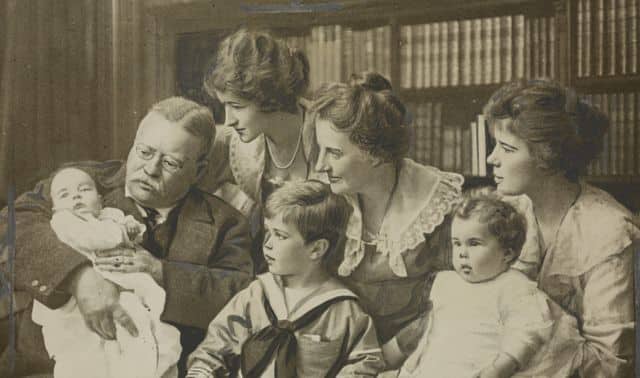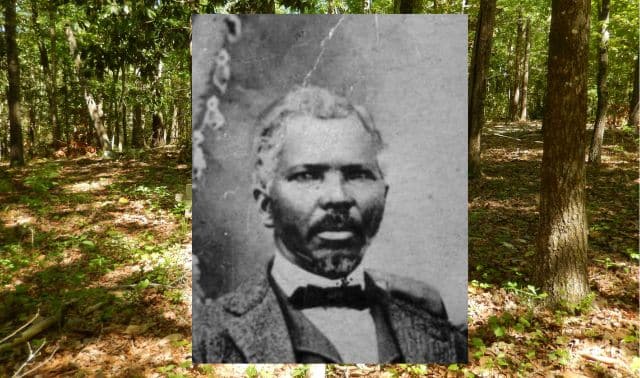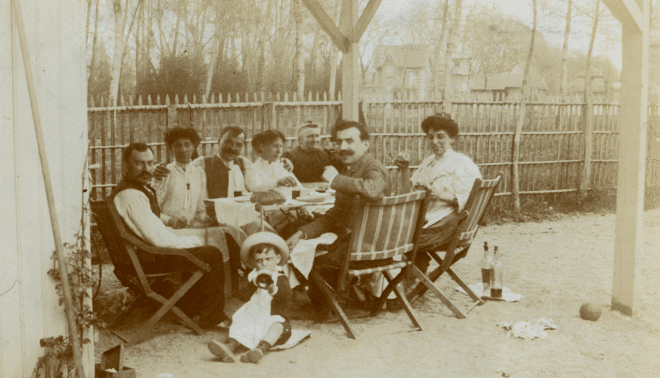Sign up for the Family Tree Newsletter! Plus, you’ll receive our 10 Essential Genealogy Research Forms PDF as a special thank you.
Get Your Free Genealogy Forms
"*" indicates required fields

Think about your family tree like a real tree that you’d climb. Many genealogists imagine their tree only “vertically,” focusing on whatever branch takes them the highest—the furthest back in time.
But (as when climbing real trees) climbing your family tree also requires you to think horizontally, moving side to side among lower-hanging branches to find a stronger branch.
In genealogical terms, that less-direct, more-holistic approach can unlock new information and allow us to overcome many research challenges. Sometimes to move forward, you have to actually move to the side.
That’s the essence of collateral research, a genealogy technique that encourages studying relatives besides your direct-line ancestors. Learn all about collateral relatives and why they’re worth your research time.
What Is a Collateral Relative?
Simply put, a collateral relative is a family member who is not your direct ancestor or descendant. Some examples include:
- Siblings
- Aunts and uncles
- Nieces and nephews
- Cousins of various kinds
- Siblings of your grandparents (grand-uncles and -aunts) and other ancestors
Your ancestors’ in-laws, step-siblings, step-children, other spouses and any adopted family members might also be considered collateral relatives.
You may have also heard of ancestral “clusters.” Cluster research examines an even wider group of people, including those who they might not be related to you at all: your ancestor’s neighbors, coworkers, friends, associates and others in their community.
“Collateral relatives” and “clusters” are widely used as genealogical terms. But a similar methodology was popularized by Elizabeth Shown Mills and her “FAN [friends, associates and neighbors] principle,” which highlights the importance of researching your ancestor’s wider social networks.
Why Should I Research Collateral Relatives?
You may not have inherited DNA from them, but collateral relatives can still prove immensely helpful in researching your ancestors. Indeed, their records can serve as substitutes when your ancestors’ documents are missing or incomplete.
For example, say your ancestor’s vital records don’t give the name of his parents. But his brother’s birth certificate (which was likely created at a different time and may hold different details) could reveal the parents’ names.
Collateral research is especially helpful when:
- Determining a woman’s maiden name (and researching women in general)
- Researching common surnames
- Distinguishing between two similarly-named people
- Tracing aging or dependent ancestors (e.g., elderly parents may have lived with adult children besides your ancestor)
- Learning the name of a family’s specific ancestral hometown
- Researching ancestors who were enslaved
- Finding living relatives to collect (or share) stories, heirlooms or photos
- Identifying family members to take DNA tests
- Participating in heir research or surname studies
- Studying family health history or naming patterns
Researching collateral relatives also presents a fuller picture of your family tree. How much of your own life story has been shaped by a beloved sister, aunt or cousin? If you recorded the stories of only you, your parents and grandparents, you’d be excluding so much of your family’s life and what makes you, you.
This is especially true for our ancestors, who were more likely to live near extended family members or in mixed-generation households. And if everyone researched only their ancestors, scores of relatives would be forgotten by history.
Tips for Collateral Research
Search for their records, too
Seek out records of your collateral kin with the same urgency as you would for your ancestors. As previously stated, they may even contain details that are directly relevant to your ancestor. Start with your ancestors’ siblings, then work out to more-distant relatives like cousins.
Document the whole family
Some sources document whole families, in which collateral relatives appear in the same record as your ancestors: censuses, obituaries and more. So it may just take one extra step to record a collateral relative’s entry, in addition to your ancestor’s. You can log details about a couple and all of their children using a family group sheet.
Collaborate
Lean on cousins, DNA matches and other relatives in your extended family. You never know what family treasures are hidden in someone else’s attic. Sunny Jane Morton and Lisa Louise Cooke teamed up to write an article on working with other genealogists, and our social media editor shared her tips for using social media to connect with relatives.
Remember genealogy best practices
The fundamentals of good research apply to any historical person that you’re studying—ancestors or not:
- Work backward in time
- Document your findings
- Consult a wide variety of records
- Cite your sources
- Avoid making hasty assumptions
Collateral relatives have the potential to break down your genealogical brick walls. With sound research methods and that broader pool of family members, you’ll set yourself up for success.
Related Reads
Last updated: July 2023








